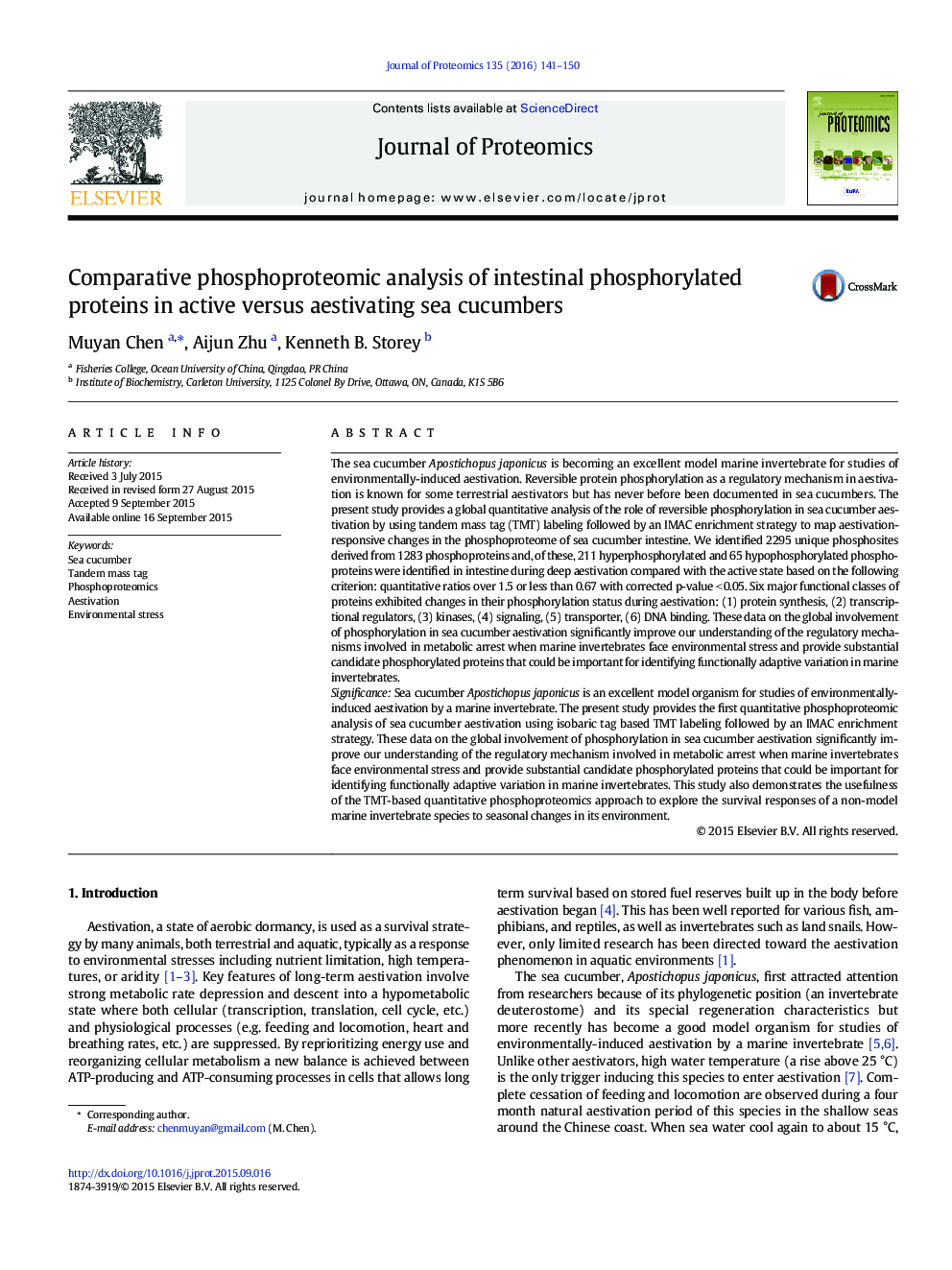| کد مقاله | کد نشریه | سال انتشار | مقاله انگلیسی | نسخه تمام متن |
|---|---|---|---|---|
| 1225748 | 1494746 | 2016 | 10 صفحه PDF | دانلود رایگان |
• TMT labeling based phophoproteomics were used to study marine invertebrate aestivation.
• 211 hyperphosphorylated and 65 hypophosphorylated proteins were identified.
• Four major functional classes of proteins exhibited changes in their phosphorylation status
• Potential regulatory mechanism involved in metabolic arrest was presented.
The sea cucumber Apostichopus japonicus is becoming an excellent model marine invertebrate for studies of environmentally-induced aestivation. Reversible protein phosphorylation as a regulatory mechanism in aestivation is known for some terrestrial aestivators but has never before been documented in sea cucumbers. The present study provides a global quantitative analysis of the role of reversible phosphorylation in sea cucumber aestivation by using tandem mass tag (TMT) labeling followed by an IMAC enrichment strategy to map aestivation-responsive changes in the phosphoproteome of sea cucumber intestine. We identified 2295 unique phosphosites derived from 1283 phosphoproteins and, of these, 211 hyperphosphorylated and 65 hypophosphorylated phosphoproteins were identified in intestine during deep aestivation compared with the active state based on the following criterion: quantitative ratios over 1.5 or less than 0.67 with corrected p-value < 0.05. Six major functional classes of proteins exhibited changes in their phosphorylation status during aestivation: (1) protein synthesis, (2) transcriptional regulators, (3) kinases, (4) signaling, (5) transporter, (6) DNA binding. These data on the global involvement of phosphorylation in sea cucumber aestivation significantly improve our understanding of the regulatory mechanisms involved in metabolic arrest when marine invertebrates face environmental stress and provide substantial candidate phosphorylated proteins that could be important for identifying functionally adaptive variation in marine invertebrates.SignificanceSea cucumber Apostichopus japonicus is an excellent model organism for studies of environmentally-induced aestivation by a marine invertebrate. The present study provides the first quantitative phosphoproteomic analysis of sea cucumber aestivation using isobaric tag based TMT labeling followed by an IMAC enrichment strategy. These data on the global involvement of phosphorylation in sea cucumber aestivation significantly improve our understanding of the regulatory mechanism involved in metabolic arrest when marine invertebrates face environmental stress and provide substantial candidate phosphorylated proteins that could be important for identifying functionally adaptive variation in marine invertebrates. This study also demonstrates the usefulness of the TMT-based quantitative phosphoproteomics approach to explore the survival responses of a non-model marine invertebrate species to seasonal changes in its environment.
Figure optionsDownload high-quality image (149 K)Download as PowerPoint slide
Journal: Journal of Proteomics - Volume 135, 1 March 2016, Pages 141–150
